This is my first impression of the The ASA circular E6-B Flight Computer
I decided to buy myself a new circular flight computer. I still have the Jeppesen CR5, which is the small version of CR3. The CR5 is too small for me. I find it difficult to see the lines and numbers printed on it.
So my choice stood between a new Jeppesen CR3 or an ASA E6B. I chose the last one because I wanted to try something else.
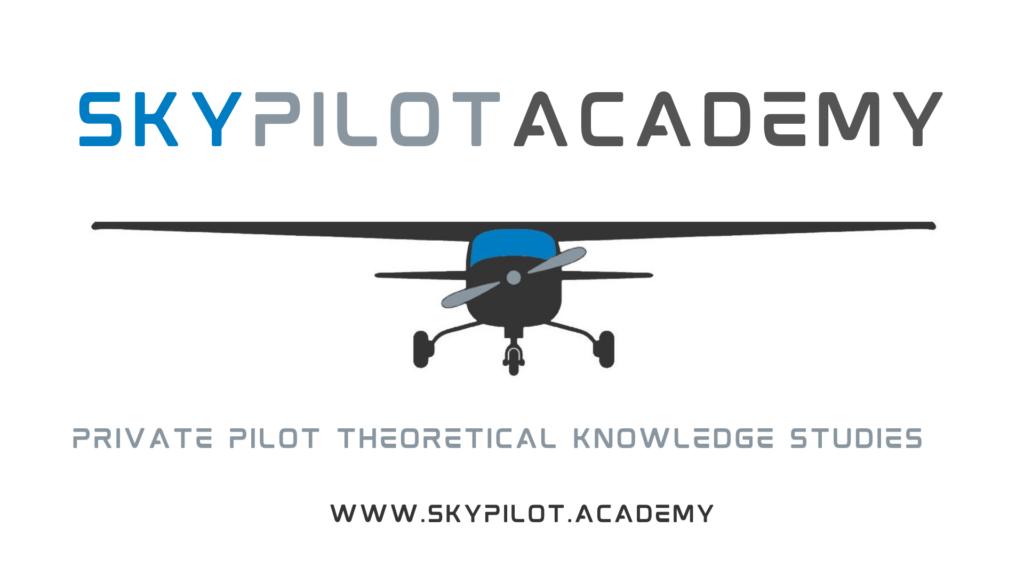
Theoretical Knowledge Course for the Private Pilot Licence
Start your journey to becoming a pilot with Skypilot Academy’s online Theoretical Knowledge Course for the Private Pilot Licence. At Skypilot Academy, we’re dedicated to training our students to become confident, safe and efficient pilots by providing in-depth theoretical knowledge training of the highest standard.
Learn more at Skypilot Academy
The first impression is excellent. The size of the disc is extensive, and all details are clearly visible. It is truly a great pleasure to use the calculator side. The wind side is also straightforward to read. What is not so good is the quality of the plastic. The plastic discs appear thin and fragile. And the innermost plate is not flush with the back.
Here, ASA has created a product that could be fantastic, but they have chosen to save on the quality of the plastic. But still, I enjoy using it. Let’s see what it’s like to use to solve some problems.
A velocity 120 km/h, expressed in knots, is:
- 50 kts.
- 65 kts.
- 60 kts.
- 58 kts.
This is an easy one. Just position the NM mark on the inner scale opposite the Km mark on the outer scale. Read the number of NM on the inner scale opposite 120 km on the outer scale. Or you could just divide 120 km by 1,852. Answer 65 kts.
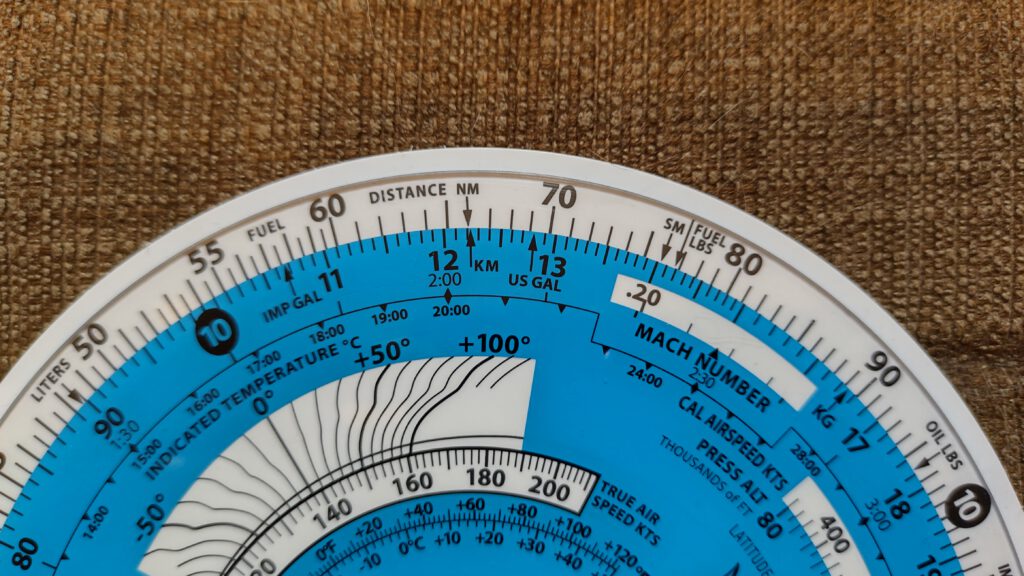
100 kg is how many pounds?
- 250 lbs.
- 220 lbs.
- 180 lbs.
- 200 lbs.
Same thing here. Plase LBS mark opposite the Kg mark. Read weight in lbs on the outer scale, opposite the number of 100 kg on the inner scale. Answer 220 lbs.
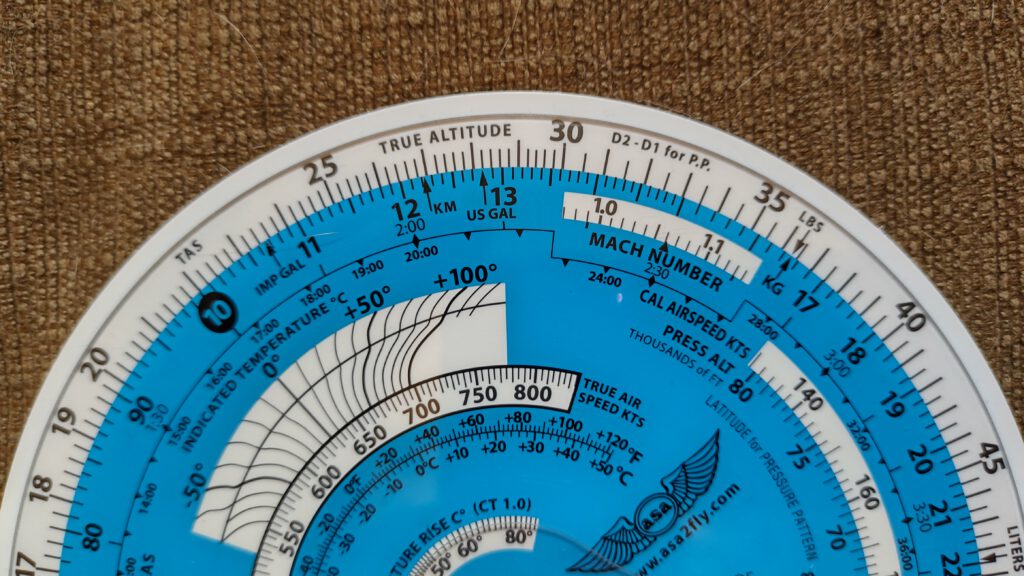
How far will an aircraft travel with 32 gal of usable fuel with fuel consumption 7,1 gal/h at the groundspeed 108 kts? (Allow 1-hour final reserve fuel)
- 420 NM.
- 487 NM.
- 379 NM.
- 384 NM.
First you need to know how much fuel you can use. You need one hour of reserve, which is 7,1 gal. So 32 gal minus 7,1gal is 24.9 gal. So you can burn 24,9 gal to your destination at a rate of 7,1 gal/h. That gives you an endurance of 3:30 hrs. With a ground speed of 108 kts you can go 379 NM.
To start with, set the speed index opposite the fuel consumption of 7,1 gal/h on the outer scale. Read 3:30 hours on the inner scale opposite 24,9 gal on the outer scale.
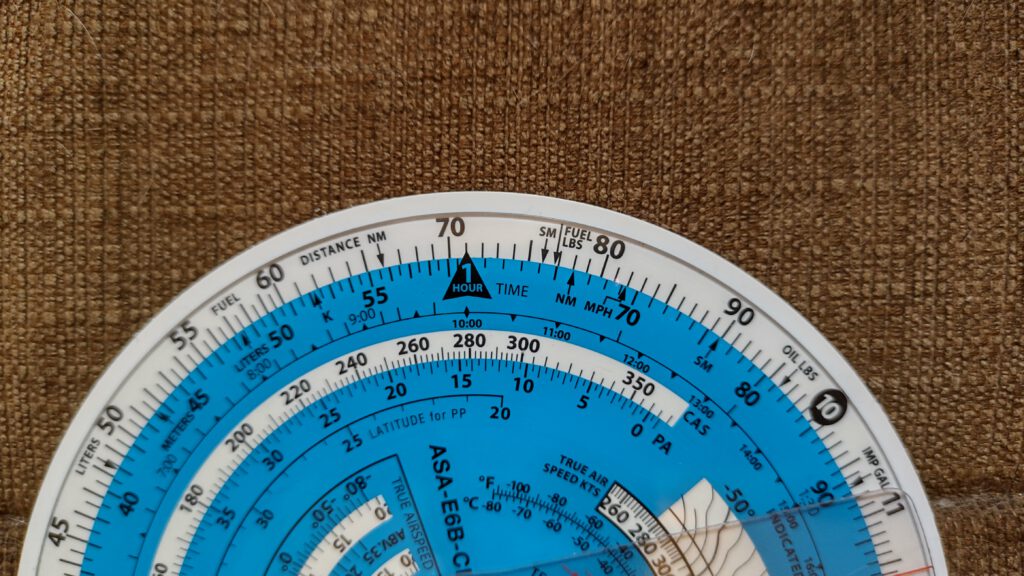
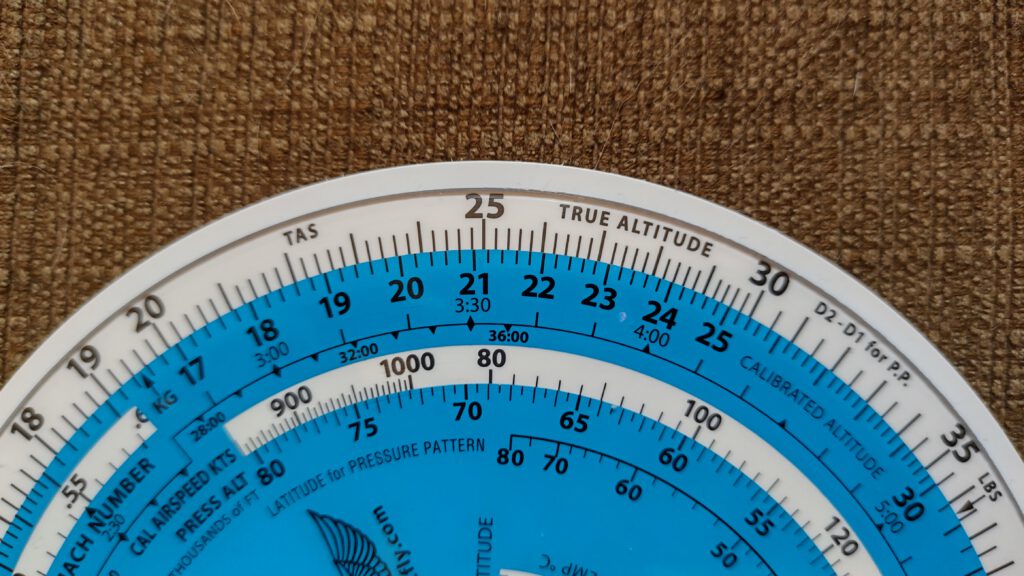
Then set the speed index opposite 108 kts and read 379 NM on the outer scale opposite 3:30 on the outer scale.
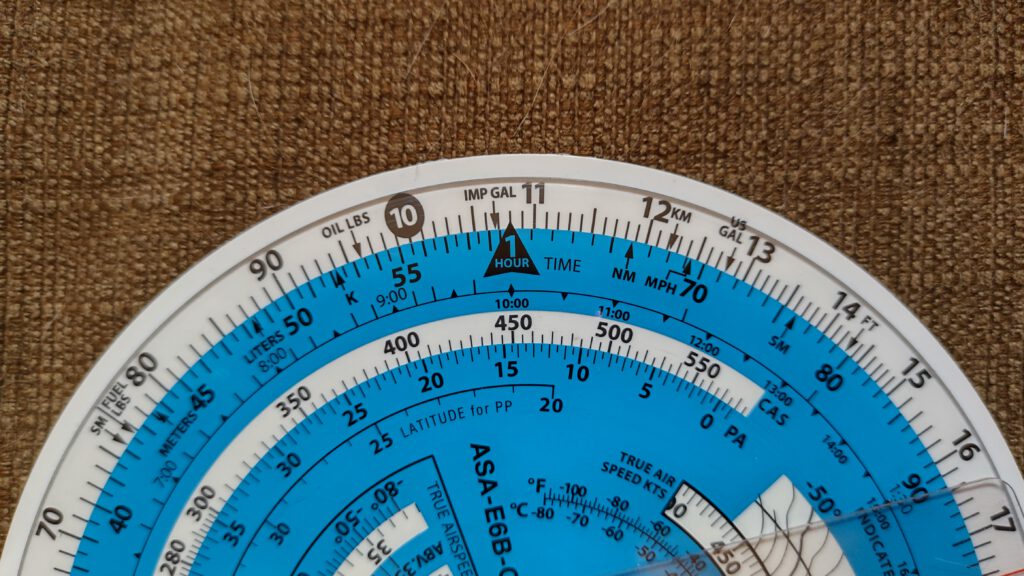
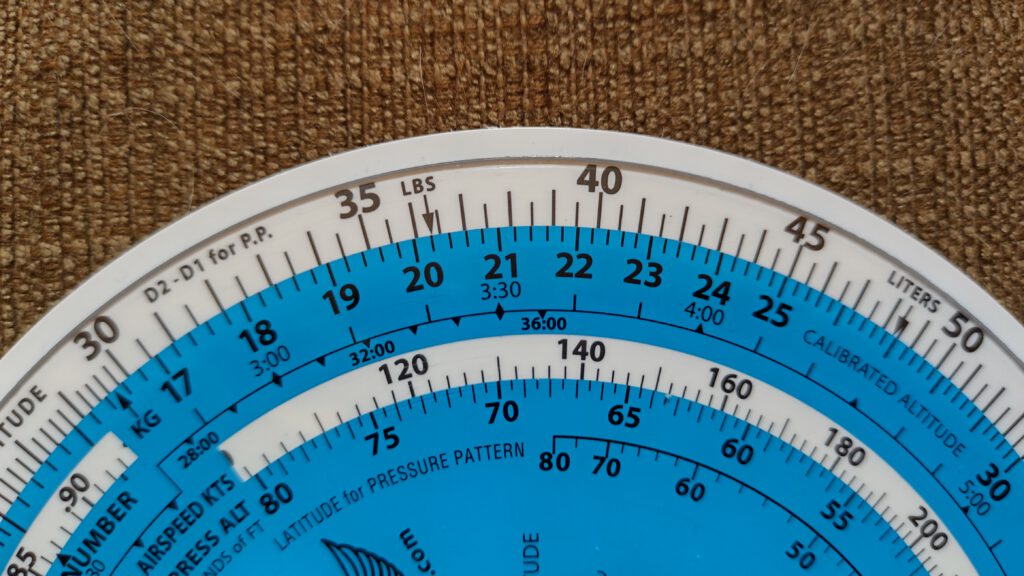
So that is it for now. I will do the wind side in a later blog entry. Using the wind side may require a few more steps for a typical wind problem, than what it would take on the more common flight computer, such as the CRP 1. But once you practice it a little, it will become a breeze.
Here is the link to the manual:
E6-B Circular Flight Computer manual
Enjoy! I mean it 🙂